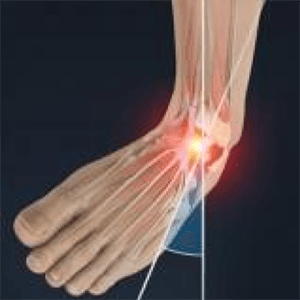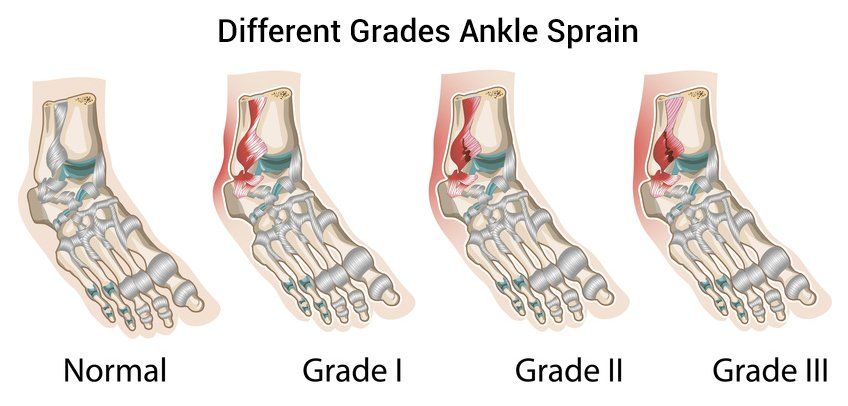Ankle Sprain
Causes of Ankle Sprains
Most commonly it occurs when you participate in sports or when you jump or run on a surface that is irregular.
Symptoms of Ankle Sprains
Ankle sprains can cause pain, swelling, tenderness, bruising, stiffness, and inability to walk or bear weight on the ankle.
Prevention of Ankle Sprains
An ankle sprain can be prevented by following simple practices:
- Warm up before any exercise and physical activity
- Walk or run carefully on uneven ground
- Wear the right kind of shoes
- Listen to your body and slow down when you feel pain or get tired
Diagnosis of Ankle Sprains
The diagnosis of an ankle sprain is usually made by evaluating the history of injury and physical examination of the ankle. X-ray of your ankle may be needed to confirm if a fracture is present.
Ankle Sprain Grades
Your doctor grades your sprain depending on the extent of damage to the ligaments.
- Grade 1 sprain (mild)
- Minimal stretch with microscopic ligament tear
- Mild swelling and tenderness around the ankle
- Grade 2 sprain (moderate)
- Partial ligament tear
- Moderate swelling and tenderness around the ankle
- Abnormal looseness of the joint when manipulated during diagnosis
- Grade 3 sprain (severe)
- Complete ligament tear
- Significant tenderness and swelling around the ankle
- Instability when manipulated during diagnosis
Treatment of Ankle Sprains
The most common treatment recommended for ankle sprains is rest, ice, compression and elevation (RICE).
- Rest: You should not move or use the injured part to help to reduce pain and prevent further damage. Crutches may be ordered that help while walking.
- Ice: An ice-pack should be applied over the injured area up to 3 days after the injury. You can use a cold pack or crushed ice wrapped in a towel. Never place ice directly over the skin. Ice packs help reduce swelling and relieve pain.
- Compression: Compression of the injured area helps to reduce swelling and bruising. This is usually accomplished by using an elastic wrap for a few days or weeks after the injury.
- Elevation: Place the injured ankle above your heart level to reduce swelling. Elevation of an injured leg can be done for about 2 to 3 hours a day.
During your recovery, rehabilitation exercises are recommended to strengthen and improve range of motion in your foot. You may need to use a brace or wrap to support and protect your ankle during sports activities. Avoid pivoting and twisting movements for 2 to 3 weeks. To prevent further sprains or re-injury you may need to wear a semi-rigid ankle brace during exercise, special wraps and high-top lace shoes.
If Ankle Sprain Is Untreated
If your ankle sprain is not treated, it can cause joint weakness and often re-injury. The unstable ankle can lead to a particularly harmful fall.







